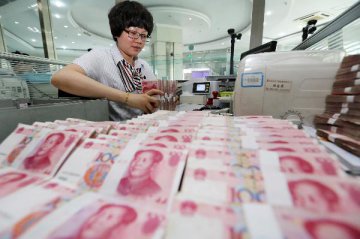MANILA, June 19 (Xinhua) -- The local currency bond markets in emerging East Asia continued to expand over the first quarter of 2019 despite moderating global growth, according to the Asian Development Bank’s (ADB) latest issue of the Asia Bond Monitor released on Wednesday.
The quarterly report by the Manila-based bank said housing bonds and green bonds are potential areas of future growth.
“The region’s bond markets are holding firm but the risks are still to the downside,” ADB Chief Economist Yasuyuki Sawada said.
“That said, we see potential in the development of housing bonds to finance growing demand for homes as countries urbanize and for green bonds to fund clean energy and other climate-friendly projects,” he added.
At the end of March, the report said there were 15 trillion U.S. dollars in local currency bonds outstanding in emerging East Asia, 2.9 percent more than at the end of 2018 and 14.0 percent more than at the end of March 2018.
Bond issuance in the region, meanwhile, amounted to 1.4 trillion U.S. dollars in the first quarter, 10.0 percent higher than in the last quarter of 2018 on the back of stronger issuance of government debt, the report added.
The report said foreign investors were upbeat on China in the first quarter of 2019 due to a better-than-expected economic performance.
Indonesia also enjoyed greater foreign investment but foreign holdings in the Philippines took a hit as investors cashed out profits, the report added.
Uncertainty over the general election spurred a wait-and-see approach among foreign investors in Thailand, the report said.
The report said government bonds accounted for 61.7 percent of emerging East Asia’s total local currency bond stock at 9.3 trillion U.S. dollars as of the end of March, a 14.0 percent increase versus end March 2018.
Meanwhile, the report said there were 5.8 trillion U.S. dollars in corporate bonds outstanding, 14.2 percent more than a year earlier.
It said China remained the largest bond market in terms of size in emerging East Asia, with 75.3 percent of the region’s total outstanding bonds.
Malaysia had the largest market for sukuk, or Islamic bonds, while South Korea had the largest bond-to-gross domestic product ratio in the first quarter of this year, at 125.6 percent, the report said.
In a special chapter, the report noted that developing a market for housing bonds would increase access to home loans at a time of rising demand and diversify housing finance, traditionally provided by commercial banks.
The report said provision of housing finance through the bond market would also mitigate the maturity mismatch arising between typically long-term borrowing by homeowners and short-term bank loans.
Developing a housing bond market can help countries raise funds to build more housing units, meeting the increasing housing demand while also contributing to growth and development through job creation, the report said.
Meanwhile, the report said the continued development of Asia’s green bond market is helping the region finance climate mitigation and adaptation projects.
For instance, a senior secured note from Indonesia’s Tropical Landscape Finance Facility in February financed a sustainable natural rubber plantation, while in May, Korea Water Resources Corporation sold Asia’s first-ever water bond to finance sustainable water management systems.























Latest comments